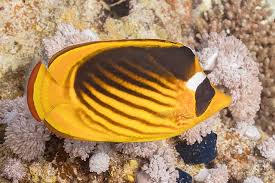Flowers, with their captivating beauty and diverse array of species, are not only integral to the natural world but also deeply intertwined with a multitude of industries, each benefiting from their unique characteristics and properties. From agriculture and medicine to culture and tourism, the influence of flowers extends far beyond their botanical realm, shaping economies, enhancing experiences, and enriching lives across different sectors. Exploring the intricate connections between flowers and various industries offers insights into the diverse roles they play in driving innovation, fostering well-being, and creating memorable experiences for people around the world.

Agriculture: Pollination and Crop Production
In agriculture, flowers are essential for pollination, the process by which pollen is transferred from the male reproductive organs of flowers to the female reproductive organs, leading to fertilization and fruit or seed production. Pollinators such as bees, butterflies, and birds play crucial roles in pollinating crops, ensuring the productivity and quality of many agricultural commodities.
Furthermore, flowers are cultivated as crops themselves, both for their ornamental value and for commercial purposes such as cut flowers, potted plants, and floral arrangements. The floriculture industry relies on the cultivation, harvesting, and distribution of flowers for various markets, including retail, wholesale, and event floristry.
Medicine: Therapeutic and Healing Properties
Flowers have been used for centuries in traditional medicine systems for their therapeutic properties and medicinal benefits. Many floral species contain bioactive compounds with pharmacological effects, such as anti-inflammatory, antimicrobial, and analgesic properties, making them valuable sources of natural remedies for various ailments.
Modern pharmaceutical research continues to explore the potential of flowers in drug discovery and development, extracting and synthesizing compounds from floral extracts for pharmaceutical applications. Additionally, flowers are used in aromatherapy and herbal medicine practices, where their fragrances and essential oils are believed to promote relaxation, stress relief, and emotional well-being.
Culture: Symbolism and Tradition
Flowers hold profound cultural significance across diverse societies and civilizations, serving as symbols of love, beauty, and spirituality. In many cultures, specific flowers are associated with rituals, ceremonies, and traditions, carrying deep symbolic meanings and conveying messages of celebration, mourning, or remembrance.
Floral motifs and patterns are prevalent in art, literature, and architecture, reflecting humanity’s enduring fascination with flowers and their symbolic representation of life, growth, and renewal. From religious iconography to floral festivals and customs, flowers play integral roles in shaping cultural identities and traditions around the world.
Tourism: Attractions and Experiences
Flowers serve as major attractions and focal points for tourism destinations, drawing visitors from near and far to experience their beauty and charm. Botanical gardens, arboretums, and public parks showcase diverse floral collections, providing opportunities for education, recreation, and relaxation in natural settings.
Flower festivals and events celebrate floral diversity and cultural heritage, attracting tourists and generating economic benefits for local communities. From cherry blossom festivals in Japan to tulip festivals in the Netherlands, floral tourism offers immersive experiences and memorable encounters with nature’s splendor.
Conclusion: Harnessing the Power of Flowers Across Industries
Flowers are not only symbols of natural beauty but also powerful agents of economic, social, and cultural transformation across various industries. From their pivotal role in agriculture and medicine to their profound cultural significance and allure in tourism, flowers enrich our lives in multifaceted ways, inspiring innovation, fostering well-being, and creating memorable experiences for people around the globe.
By recognizing and embracing the interconnection between flowers and diverse industries, we can harness their potential to drive sustainable development, promote cultural exchange, and enhance the quality of life for individuals and communities worldwide. Whether as pollinators of crops, sources of healing and inspiration, symbols of tradition and heritage, or attractions for tourism and recreation, flowers continue to weave their timeless magic into the fabric of our society, connecting us to the beauty and wonder of the natural world.









